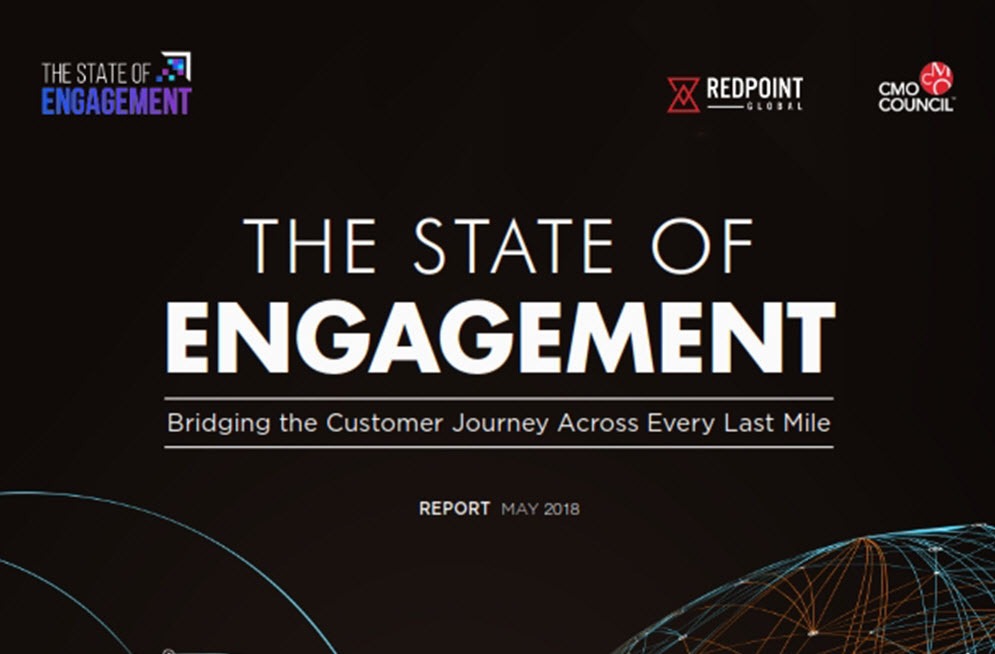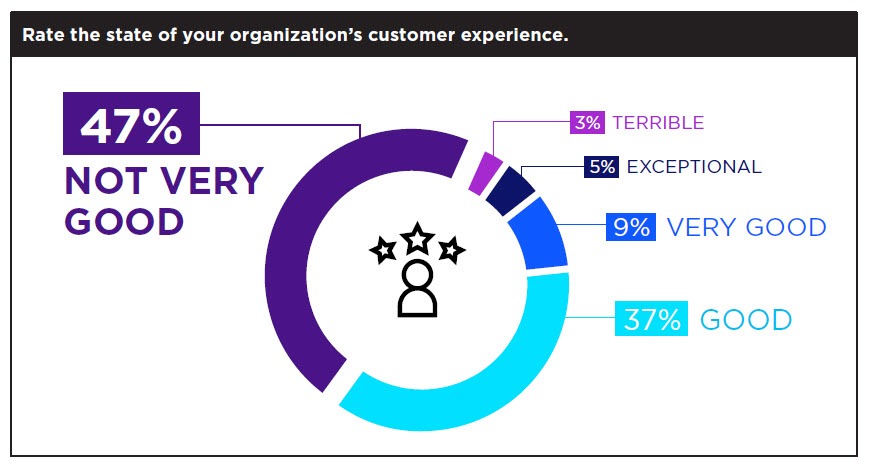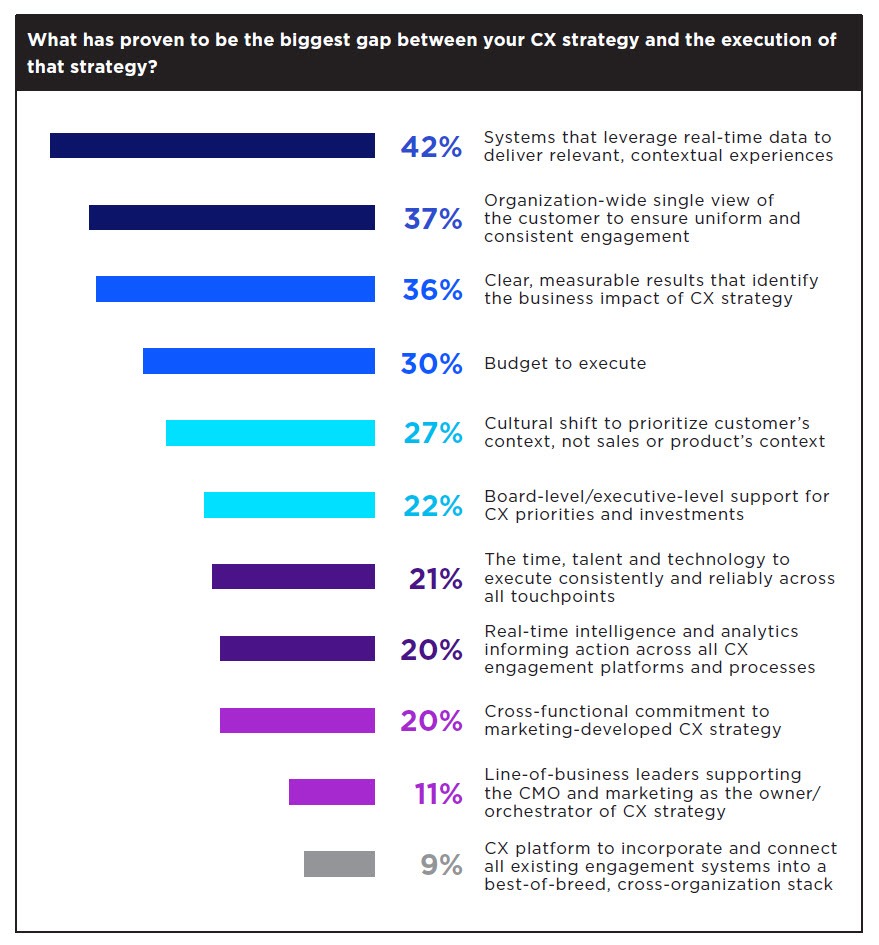 The job of the chief marketing officer (CMO) has changed along with the nature of the customer’s path to purchase. As consumers have moved away from the traditional linear journey in favor of a highly-personalized path to purchase, CMOs have added leading the execution of the enterprise-wide customer experience strategy to their list of responsibilities. This is a new area for many CMOs, who have historically focused on crafting the most innovative messaging and creative media production.
The job of the chief marketing officer (CMO) has changed along with the nature of the customer’s path to purchase. As consumers have moved away from the traditional linear journey in favor of a highly-personalized path to purchase, CMOs have added leading the execution of the enterprise-wide customer experience strategy to their list of responsibilities. This is a new area for many CMOs, who have historically focused on crafting the most innovative messaging and creative media production.
 Success remains elusive for the newly empowered CMO. Forty-seven (47) percent of marketers admit they are failing to deliver on the customer expectation of personalization and contextual engagements. That so many marketers haven’t delivered on customer expectations is troubling, especially because consumers will increasingly flee brands that they feel don’t meet their needs. This realization is among the conclusions of the new report from CMO Council, “The State of Engagement: Bridging the Customer Journey Across Every Last Mile.” Redpoint Global partnered with CMO Council to produce this research, which surveyed more than 200 senior marketing executives across multiple industries.
Success remains elusive for the newly empowered CMO. Forty-seven (47) percent of marketers admit they are failing to deliver on the customer expectation of personalization and contextual engagements. That so many marketers haven’t delivered on customer expectations is troubling, especially because consumers will increasingly flee brands that they feel don’t meet their needs. This realization is among the conclusions of the new report from CMO Council, “The State of Engagement: Bridging the Customer Journey Across Every Last Mile.” Redpoint Global partnered with CMO Council to produce this research, which surveyed more than 200 senior marketing executives across multiple industries.
What Skills Do CMOs Need in This New World?
With the added responsibility of the customer experience, CMOs need to add some new skills to their repertoire. Which ones? For starters, the CMO needs to understand more closely the technologies in their marketing stack. This is partly in response to the in-sourcing trend of the past few years. Even 10 years ago, CMOs could reliably outsource data management or campaign execution and still generate business results. That approach can’t keep pace with a customer as they interact with a brand in real-time across any and all the channels that they choose to interact in, so more outsourced functions have started to come back in-house.
Understanding what solutions are used is especially important. The marketing technology stack is fragmented among distinct operational silos, each with their own specialized engagement system. This is a problem. Siloed operations limit the brand’s ability to engage consumers at the right time in the right place, which is why a single point of control over customer data and interactions is so important to understanding a consumer uniquely and where they are in their path-to-purchase to deliver the right next offer or action that’s in the proper context and cadence.
CMOs also need to understand the customer experience more acutely than they have, including how consumers interact with the brand. Once CMOs understand the how and when of consumer interaction, they can more readily deliver the kinds of highly personalized experience customers expect. But to understand that, CMOs first need to solve the attribution problem.
Solving the Modern Marketer’s Attribution Problem
According to the CMO Council report, only 10 percent of marketers can reliably attribute the customer experience to business impact. Understanding how each consumer wants to uniquely interact with a brand or retailer is a vital component in understanding the path to purchase.

Customers don’t all respond to the same message in the same way, or even at the same time. An SMS coupon delivered when someone breaches a geofence at a retail store, such as a coupon for drill bits at a hardware store, will be acted on differently than the same offer received at 10 p.m. If that coupon for drill bits is delivered to someone who has never purchased a drill or shown any intent for buying a drill, then it will at best be ignored as irrelevant.
Brands with accurate attribution capabilities are able to determine the success or failure of each campaign and narrow that down to the specific customers who responded. Brands who can make that determination are the ones who will deliver the personalized experiences consumers demand. In an age where delivering a contextually relevant customer experience is the indicator of long-term success, marketers need to fix their attribution problems to thrive.
Part of fixing the attribution problem is having a single point of operational or data control that can unify online and offline customer information. That’s important, because knowing all that is knowable about customer helps to understand attribution. Attributing success to the right message or right interaction touchpoint is fundamentally about understanding the customer in totality.
To deliver impactful customer experiences, 42 percent of respondents said systems that leverage real-time data to deliver relevant, contextual experiences were the most critical piece of this puzzle. This acknowledgment is heartening, as is that only 30 percent of marketers said that budget was a necessity to meeting their goals. That so few CMOs said budget was needed makes it clear that more brands have acknowledged the importance of fully funding marketing’s efforts.
Despite understanding what’s necessary to achieve their goals, the fact that marketers can’t is a problem. Brands need to be able to tie marketing’s efforts back to business results. Adding more interaction touchpoints such as a mobile app or in-store beacon technology or IoT sensors is only going to make this challenge more complex. The only thing that can reliably improve the customer experience, and allow for optimization, is deploying a solution that can function as a single point of control over the data aggregation, analysis, and interactions.
The forces of commoditization sparked a change in market dynamics that made traditional methods obsolete. More products, more channels, and lower prices will not save brands today. It’s all too easy for prices to drop to zero, and the sheer number of options for different products means there is almost always someone offering the same for less. Customer experience is the only way forward in this new world. The brands and retailers focused on delivering highly personalized engagements along the customer’s path to purchase are the ones who will succeed in the long term.
Download the CMO Council report today for more.

